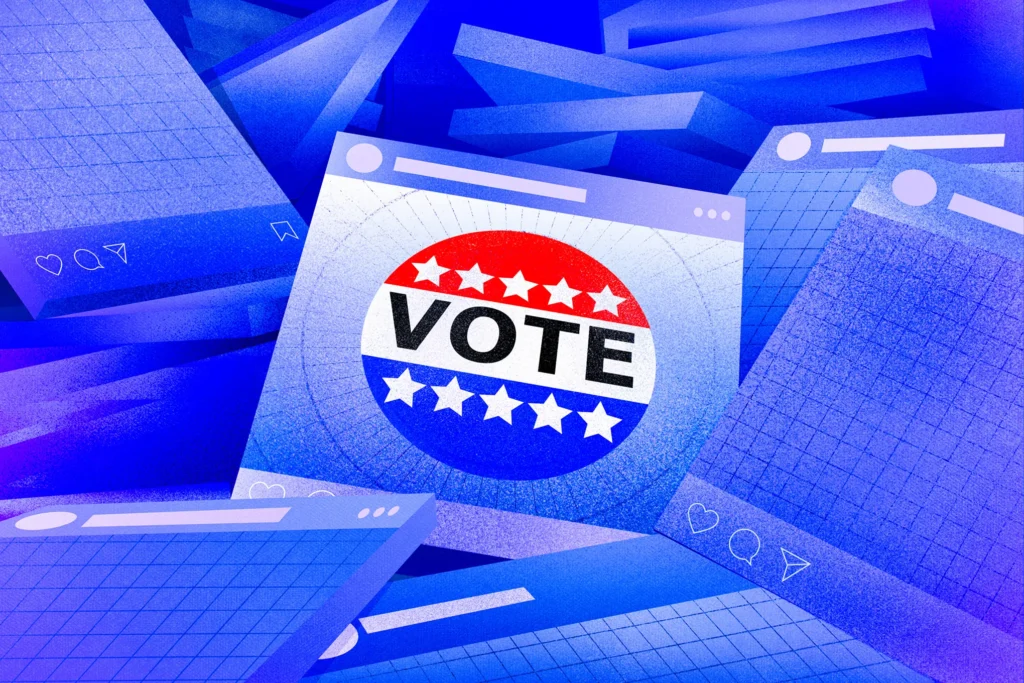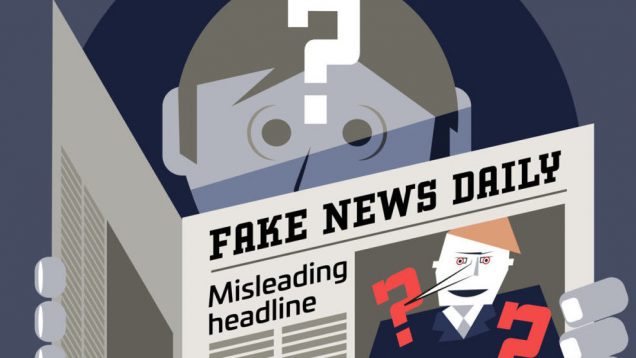In the past two decades, digital advertising has gone from a niche element of political campaigning to one of its central and most disruptive pillars. From targeted social media posts to programmatic ads on Connected TV (CTV), digital advertising is fundamentally reshaping the U.S. political landscape. Its influence stretches far beyond elections, affecting public opinion, policymaking, and the way citizens engage with democracy itself.
This evolution isn’t just about new tools – it’s about a seismic shift in strategy, spending, and influence. In this blog, we explore how digital advertising has transformed political campaigning, the tools and platforms driving this change, and the implications for the future of democracy in the U.S.
From Door-to-Door to Click-to-Convert: The Digital Revolution in Politics
Traditionally, political campaigns relied on grassroots outreach, TV and radio spots, and newspaper ads to reach voters. While television still commands the largest share of political ad spending, digital has emerged as a fast-growing contender.
According to recent reports, digital ad spending accounted for over 35% of political advertising budgets in 2024, with projections indicating even greater growth for the 2026 midterms.
One of the key reasons for this shift is precision targeting. Unlike TV or print media, digital platforms allow campaigns to target voters based on demographics, location, browsing behavior, interests, and even psychographic profiles. This capability allows political advertisers to deliver highly tailored messages to specific segments of the population at scale.
Microtargeting and the Power of Data
At the heart of digital political advertising is data-driven microtargeting. Campaigns can now use voter registration data, public records, social media activity, and consumer behavior to build complex voter profiles. Platforms like Facebook, Google, and now CTV services offer tools for audience segmentation that were unimaginable just a decade ago.
Microtargeting enables campaigns to:
- Target undecided voters in swing states with persuasive content.
- Mobilize supporters with turnout messaging in key districts.
- Suppress turnout among opposition groups with negative or dissuasive ads.
The Brennan Center notes that in 2020, over $1 billion was spent on online political advertising, and in 2024 that number was significantly higher, underscoring the growing dependence on these tactics.
However, this granular level of targeting also raises questions about transparency and accountability. Voters often have no idea why they’re seeing certain political ads, nor do they have insight into who funded them or what data was used to target them.
CTV and Programmatic: The New Frontier
The growth of Connected TV (CTV) has opened another frontier for digital political ads. As more voters “cut the cord,” platforms like Hulu, Roku, and YouTube TV have become key battlegrounds. According to TV Technology (2025), CTV political ad spend in 2024 increased by 300% compared to the previous cycle.
Programmatic advertising — automated, real-time buying of ad space — has further transformed how campaigns operate. Rather than negotiating ad space manually, campaigns use algorithms to purchase impressions across multiple platforms instantly, optimizing for audience reach, cost efficiency, and engagement.
Programmatic ads enable real-time adjustments, meaning campaigns can shift their strategy based on polling data, trending topics, or news events. This agility is especially valuable in volatile political environments, where narratives can change overnight.
The Role of Social Media: Virality and Influence
Social media remains a dominant force in digital political advertising. Platforms like Facebook, Instagram, X (formerly Twitter), and TikTok offer engagement-based advertising, which rewards ads that generate likes, shares, and comments. This virality can amplify messages far beyond the paid audience.

A George Washington University panel in 2024 emphasized that social media ads are no longer just about persuasion – they’re about narrative control. Campaigns use digital ads to:
- Frame issues and candidates.
- Preempt or respond to negative stories.
- Mobilize supporters to volunteer or donate.
- Push trending hashtags or slogans.
However, algorithmic amplification on social platforms can also spread misinformation and deepen polarization. The Brennan Center’s 2024 analysis pointed out the challenge of regulating false or misleading ads, especially when enforcement mechanisms are weak or inconsistent across platforms.
Generative AI and Deepfakes: New Risks in 2025 and Beyond
 One of the most controversial developments in recent political advertising is the use of generative AI. Tools like ChatGPT, Midjourney, and others now enable campaigns, or bad actors, to create synthetic content, including deepfake videos, AI-generated images, and audio clips.
One of the most controversial developments in recent political advertising is the use of generative AI. Tools like ChatGPT, Midjourney, and others now enable campaigns, or bad actors, to create synthetic content, including deepfake videos, AI-generated images, and audio clips.
The Brennan Center’s 2024 report on generative AI warns that these tools can be used to:
- Fabricate endorsements or quotes.
- Spread disinformation with realistic-looking visuals.
- Confuse or deceive voters about a candidate’s positions or actions.
While some platforms have pledged to label AI-generated content, enforcement remains uneven. In response, several U.S. states and advocacy groups have called for stricter regulations and transparency requirements for AI in political ads.
Regulation Lag: The Wild West of Digital Political Ads
Unlike traditional media, digital platforms have been largely self-regulated when it comes to political advertising. The Federal Election Commission (FEC) has struggled to keep pace with the rapid changes in technology, leaving gaps in oversight.
According to the National Conference of State Legislatures (NCSL), some states have implemented disclosure laws for online political ads, requiring platforms to identify sponsors and provide transparency tools. However, these laws vary widely and enforcement is inconsistent.
Calls for federal legislation have intensified, particularly around:
- Disclosure of ad buyers.
- Transparency in targeting criteria.
- Data privacy and voter consent.
- Restrictions on AI-generated political content.
As of 2025, several bills are pending in Congress, but partisan disagreements have slowed progress.
Impact on Public Policy and Governance
Digital political advertising doesn’t just influence who gets elected – it also shapes how they govern. The constant data collection and audience testing used in campaigns continues into legislative strategy, with politicians using analytics to guide messaging and policy priorities.
For instance, elected officials may use digital polling and ad engagement data to:
- Test public reactions to proposed legislation.
- Target constituents with policy updates or fundraising appeals.
- Mobilize public opinion to pressure other lawmakers.
This shift toward permanent campaigning, where the line between campaigning and governing blurs, can lead to short-termism, where decisions are made based on immediate digital feedback rather than long-term considerations.
The Global Perspective: U.S. Trends in Context
The United States is not alone in grappling with the impact of digital political advertising. A 2024 report by the International Institute for Democracy and Electoral Assistance (IDEA) highlighted similar trends worldwide, with digital platforms becoming central to elections in Europe, Latin America, and Asia.
However, some countries have stronger regulations than the U.S. For example:
- The European Union’s Digital Services Act imposes strict transparency requirements on political ads.
- Canada mandates platform-level reporting for all political ad spends.
- Australia is debating limits on government advertising spend in digital channels to ensure fairness.
These international examples may provide models for U.S. reform efforts, particularly as concerns grow about foreign interference and the impact of unregulated digital influence campaigns.
Looking Ahead: The Future of Political Advertising
As we approach the 2026 midterms and the 2028 presidential election, several trends are likely to shape the next phase of digital political advertising:
- AI-Driven Personalization: Campaigns will increasingly rely on AI to generate and optimize ad content in real time.
- Privacy-Centric Targeting: With growing public concern over data privacy, campaigns may need to adopt consent-based targeting models.
- Platform Fragmentation: As voters migrate to new platforms (e.g., BeReal, Threads), campaigns will have to adapt quickly to reach them.
- Increased Regulation: Whether through state action or federal law, regulatory pressure will intensify, especially around disclosure and AI use.
- Civic Tech Innovations: New tools may emerge to empower voters with transparency dashboards, ad-tracking plugins, and fact-checking services.
Political Parties Don’t Need Another Campaign Manager – They Need a Media Leader
As digital advertising becomes the primary battlefield of political influence, political parties are facing a strategic crossroads. Traditional campaign structures, centered around campaign managers and field operatives, are no longer enough to win modern elections. What campaigns need now is not just operational leadership but media leadership.

The Role of the Campaign Manager: Still Essential, but Evolving
Historically, the campaign manager has been the architect of a political campaign – overseeing logistics, fundraising, field strategy, debate prep, and messaging. While this role is still critical, its scope is increasingly overwhelmed by the demands of modern digital strategy.
Managing a media ecosystem that spans CTV, social media, programmatic platforms, influencer networks, AI-driven tools, and real-time analytics requires specialized expertise. Simply put, campaign managers are often too stretched, and sometimes underqualified, to run the media side with the sophistication it demands.
Enter the Media Leader: Strategist, Technologist, Innovator
A Media Leader (or Chief Media Officer) brings strategic focus and technical skill to the table, overseeing every aspect of digital communications, including:
- Ad Spend Optimization: Maximizing ROI across diverse platforms using real-time data.
- Audience Customization: Leveraging voter data to segment audiences and deliver personalized content.
- Creative Innovation: Deploying AI tools to create compelling, adaptive, and scalable ad content.
- Narrative Control: Ensuring cohesive messaging across digital touchpoints, while responding rapidly to news cycles or misinformation.
- Compliance & Transparency: Navigating evolving laws and ensuring disclosure requirements are met.
This role is not just about execution; it’s about leadership at the intersection of politics, technology, and media. A Media Leader helps campaigns not just reach voters, but influence them smarter, faster, and more effectively than the competition.
Why Media Leadership Wins Elections
In 2024, the most successful campaigns weren’t just those with the best slogans or biggest war chests – they were the ones with the most agile, data-driven media strategies. Candidates who embraced digital-first campaigning, particularly on emerging platforms like TikTok or through CTV ads, gained disproportionate visibility and engagement.
A Media Leader ensures that campaigns own the digital conversation, rather than chasing it. They empower candidates to be proactive, not reactive – to set the agenda, frame the debate, and guide public opinion in real time.
The Future: Media-First Campaigns
Looking ahead, the line between campaigning and media operations will continue to blur. Voters live in a digital world, consuming content at lightning speed. Political parties that recognize this and elevate media leadership will have a distinct advantage – not just in elections, but in shaping the broader public narrative and policy discourse.
The era of digital dominance in politics isn’t coming – it’s already here. The question for political parties is no longer “Do we need a media leader?” It’s “Can we afford not to have one?”
Best Practices for Implementing Digital Ads in Political Campaigns- and How to Do It
Digital advertising can be a political campaign’s most powerful tool, but only when executed with precision, strategy, and ethical awareness. Many campaigns jump into digital with flashy creatives or big budgets, but without a solid implementation strategy, they risk wasting spend and missing key voter segments. Here’s how to do it right.
1. Define Clear Campaign Objectives First
Before launching any ads, define specific, measurable goals for your digital campaign. Are you:
- Driving donations?
- Increasing voter registration?
- Mobilizing turnout in specific districts?
- Persuading undecided voters?
Every creative, platform choice, and targeting strategy should be mapped to one or more of these goals.
Tip: Don’t lump all objectives into one campaign – segmentation is key. For instance, a GOTV (Get Out The Vote) effort should look and function differently from a persuasion campaign in a swing district.
2. Build Robust Voter Profiles and Audience Segments
Use first-party data (e.g., voter rolls, CRM lists) and third-party data providers to segment your audience by:
- Location (down to ZIP code or district)
- Demographics (age, gender, education level)
- Political behavior (past voting history, party affiliation)
- Psychographics (interests, values, online behavior)
Platforms like LiveRamp, DataTrust, or Catalist can help enrich your data and enable custom audience building.
Pro Tip: Leverage lookalike audiences on platforms like Meta Ads and Google Ads to find similar users based on your best-performing segments.
3. Select the Right Platforms for Your Audience
Different voter groups consume media differently. Choose platforms that align with your target voter behavior:
| Platform | Best For |
| Facebook/Instagram | Older demographics, community engagement, fundraising |
| TikTok | Younger voters, virality, trend-driven messaging |
| YouTube | Long-form video content, issue deep-dives |
| CTV (e.g., Hulu, Roku) | High-impact storytelling, broad demographic reach |
| Display Ads (Google DV360) | Retargeting, banner ads, contextual messaging |
Tip: Use a cross-channel strategy. Voters need to see messages multiple times across multiple mediums before taking action.
4. Create Compelling, Mobile-First Ad Creatives
Today’s voters consume content primarily on mobile devices. Your ads must be:
- Short: 6–15 seconds is ideal for video; concise copy for display ads.
- Visually engaging: Use bold colors, clear candidate branding, and subtitles.
- Call-to-Action (CTA) Focused: Tell the viewer exactly what to do – Donate Now, Register Today, Learn More, etc.
Test different ad formats (carousel, stories, reels, skippable vs. non-skippable video) to see what resonates.
Pro Tip: Use AI tools (like Adobe Firefly, Lumen5, or Canva AI) to quickly generate variations of ad creatives for A/B testing.
5. Ensure Compliance and Transparency
Digital political ads are under increased scrutiny. Make sure you:
- Disclose sponsors clearly in ad creatives.
- Follow platform-specific rules (e.g., Facebook’s Ad Library, Google’s Transparency Report).
- Archive all ads for compliance audits.
- Stay updated with state and federal regulations, especially around data usage and AI-generated content.
6. Post-Campaign Analysis: Measure What Mattered
After the election or legislative push, conduct a post-campaign analysis:
- Identify which platforms, creatives, and segments delivered best ROI.
- Measure engagement to conversion ratios (e.g., ad clicks to donation).
- Use heatmaps and voter turnout data to correlate digital engagement with real-world impact.
These insights fuel future campaigns, enabling a continuous cycle of improvement.
Digital advertising is reshaping not just the mechanics of political campaigns, but the very nature of democratic engagement. It offers unprecedented tools for outreach, persuasion, and mobilization, but also brings significant risks in terms of misinformation, manipulation, and regulatory gaps.
As the U.S. continues to navigate this evolving landscape, one thing is clear: the future of elections, and public policy, is being written not just in speeches and debates, but in algorithms, pixels, and code.
Voters, regulators, and campaigns alike must work to ensure that the promise of digital technology serves the ideals of democracy, not undermines them.



